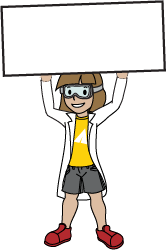213 søkeresultater som passer States Of Matter Basic
Simuleringer
- Aggregattilstander (HTML5)
- Atomære vekselvirkninger (HTML5)
- Balanser kjemiske ligninger (HTML5)
- Friksjon (HTML5)
- DC-Kretskonstruksjon (HTML5)
- DC kretslaboratorium (HTML5)
- Neonlys og andre gassutladningslamper
- pH-skala (HTML5)
- pH-skala – grunnleggende (HTML5)
- Reaktanter, produkter og overskudd (HTML5)
- Circuit Construction Kit: AC (HTML5)
- Circuit Construction Kit: AC - Virtual Lab (HTML5)
- States of Matter: Basics (HTML5)
- Quantum Bound States
- Buoyancy (HTML5)
- Eating & Exercise
- Lasers
- Make a Ten (HTML5)
- Microwaves
- Quantum Coin Toss (HTML5)
- Quantum Measurement (HTML5)
- Quantum Wave Interference
Aktiviteter
- States of Matter Basics - Clicker Questions
- States of Matter Lecture Demonstration
- Heat it Up
- States of Matter Compare Matrix
- States of Matter
- states of matter basic
- Intermolecular Forces and States of Matter - Interactive Lecture Demonstration
- Exploring Changes in States of Matter
- Boiling, Freezing, and Melting Points
- States of Matter
- States Of Matter
- States of Matter PhET
- Phases of Matter
- States of Matter
- States of Matter for Middle School
- States of Matter (Inquiry based) Phase Change and Phase diagrams
- States of Matter Basics Student Guide
- The Speed of Particles in the Different States of Matter
- States of Matter
- Inquiry activity about State of Matter: Basic
- States of Matter Modeling
- Chemistry Theater
- Kinetic Molecular Theory- Introduction (inquiry-based)
- States of Matter: Basics
- States of Matter - Lab Simulation - student procedures and questions
- Using the particle model to explain states of matter
- Identifying and Differentiating States of Matter
- States of Matter Simulation
- Kinetic Molecular theory review
- States of Matter PhET
- Gases Understanding physical properties of gases (Inquiry Based)
- States of Matter Matrix
- States of Matter Simulation Lab
- PhET Lab States of Matter Basics
- Introducción a los estados de la materia
- States of Matter Basics Simulation
- States of Matter
- Phase Changes using States of Matter Sim
- Phase Changes using States of Matter Sim
- States of Matte Inquiry
- States of matter simulations
- Phase Changes Lab!
- States of Matter lab handout
- States of Matter Guided Activity - PhET Simulation
- Introduction to energy- a chemical context
- Student Guide for PhET - States of Matter in html5
- States of Matter: Basics lesson plan
- De fasen van een stof
- Reactions and Rates 4: Equilibrium LeChatlier
- States of Matter Inquiry using Phet
- Intermolecular Forces and Molecules - Interactive Lecture Demonstration
- 물질의 상태(기초) SIM 사용지침서
- Estados de la Materia
- How Does the Earth's Climate Change?
- Lei Geral dos Gases no "States of Matter: Basics (HTML5)"
- States of Matter - Solid,Liquid,Gas
- Energía térmica y cambios de estados
- States Lab
- ChemActivity: Phase Changes and Intermolecular Forces
- Concept Questions for Chemistry using PhET
- Estados da Matéria no "States of Matter: Basics (HTML5)"
- Staes of Matter Exploration
- Using PhET in High School Chemistry- all my activities in pdf
- Fuerzas Intermoleculares y Estados de la Materia
- Elements and Compounds Lesson
- Gas laws simulation lab
- The Meaning of pH
- pH Scale
- Basic Electricity: short inquiry activities includes ideas for several sims
- 물질의 상태SIM 사용지침서
- MADDƏNİN AQREQAT HALLARI
- Estado de Agregación
- Thermal Expansion
- IMF and phase changes
- Preguntas Clicker Cambios de la materia
- Por que materiais diferentes se apresentam em estados físicos diferentes em uma mesma temperatura?
- GUÍA DE APRENDIZAJE ESTADOS DE LA MATERIA
- Gli stati della materia
- Cuadernillo PhET La materia y sus interacciones 2023
- Estats de la matèria
- Termodinâmica (Atividades) nos OA's do PhET
- Undersøgelse til Stoftilstande Basis
- Teoria zinetikoa. Materiaren egoera fisikoak eta uraren egitura berezia.
- Reconociendo los estados de agregación
- Einführung der Aggregatzustände im Teilchenmodell
- Cambio de Estado
- Prelaboratorio estados de la materia
- Preguntas Clicker sobre Estados de la Materia
- Estados de la materia: Cambio en la estructura molecular del agua
- How Does Dilution Affect pH Levels of Acids and Bases?
- Compendio de Actividades e ILDs basadas en simulaciones PhET
- PHET INTERACTIVE SIMULATIONS COMO FERRAMENTA NO ENSINO DE TERMODINÂMICA
- Concept questions for Physics using PhET (Inquiry Based)
- Density Lesson (with Putty Lab)
- Basic Thermodynamics Inquiry
- Basic Moments
- Visual Nucleosynthesis [Basic High School]
- Algebra-based Physics Semester one lessons, clicker questions, and schedule in pdf (Inquiry Based)
- Balancing Chemical Equations - Guided Inquiry Activity
- Introduction to Waves: Liquid Matter, Sound, and Light
- Projectile Motion: The Basic Flight Path
- Super Basic Gas Law
- Relative Density - sink or float
- Back to the Basics
- Forces and Motion: Basic - Concept Introduction
- pHet Building Molecules Virtual Lab - HS Chem1 level
- Blackbody Radiation and Wien's Law
- NGSS Alignment Doc for Middle School targeted PhET Sims
- FREE Auto-Graded PhET Activities on Quizizz
- Introduction to Circuits Remote Lab
- Lembar Kerja Siswa Berbasis Simulation Based Laboratory
- Speed of Wave Investigation
- Investigating the pH level of the 11 different basic substances
- Preguntas de razonamiento para todas las simulaciones HTML5
- Alineación simulaciones PhET con el Currículo Ecuatoriano - Química - Bachillerato
- NGSS Eating and Exercise Activity HS-LS1-2
- Density-MS
- Entropy, Microstates, and Probability - Interactive Lecture Demonstration Guide
- Alignment of PhET sims with NGSS
- Circuit Activity 2 Series & Parallel Circuits (Inquiry Based)
- Density Exploration
- Electric & Magnetic Fileds
- Circuit activity 2 Series and Parallel Circuits using only CCK (Inquiry Based)
- Circuit 1 Properties of Electric Circuits (Inquiry Based)
- Equality Explorer: Homework + Class Venn Diagram
- Stern Gerlach clicker questions
- SECUNDARIA: Alineación PhET con programas de la SEP México (2011 y 2017)
- Build an Atom: Introduction
- PhET Sims Aligned to the Chemistry Curriculum
- potential well lab
- Tutorial
- How do PhET simulations fit in my middle school program?
- Light Emission and Lasers
- Electric Field Simulation Activity
- pH Scale Basics | Remote Lab
- Remote Learning Molecule Shapes
- Gravity Force Lab PreAP using HTML5 Sim
- Forces and Motion
- Crash!
- PREPARATORIA: Alineación de PhET con programas de la DGB México (2017)
- Molecule Shapes Advanced
- Simple Inquiry-based Build an Atom Simulation Student worksheet
- MS and HS TEK to Sim Alignment
- Guided Discovery for Waves on a String
- Spinometer
- Net force
- Waves
- Build a Molecule Basics
- Isotopes
- Photoelectric PhET lab
- Math facts - Using the Multiplication Chart
- Projectile Motion Simulator
- Physical Science Limiting Reactants Intro
- Heat Intro
- Greenhouse Effect: Good or Bad?
- Using the Radioactive Dating simulations
- Intro Lab
- Wave Basics for Middle Schoolers
- Sound Waves Lab
- Students' Learning Activity (Fluid Pressure & Flow)
- Gas Properties Simulation
- Refraction in Glass Blocks
- Coulomb's Law Lab
- Binomial Distribution
- Simple WS with Energy Forms & Changes pHet
- Lab: PhET Build an Atom
- Energy Forms and Changes
- Basics of Electricity
- PhET Interactive Lab on pH
- Build an Atom, Isotope, & Ion
- One- and Two-Dimensional Collisions - Concepts Practice
- Atom Builder
- Discovering Newton's Second Law
- Exploring Chemical Reactions and the Law of Conservation of Mass
- Natural Selection Lab Questions
- Virtual Lab - Hooke's Law and Spring Systems
- Projectile Motion: Gravity & Air Resistance
- High School Chemistry 1 level: Limiting reagents
- Quantum Wave Interference, PhET, Worksheet, High Intensity, Problems
- Greenhouse Effect Basics
- Free fall
- Lady Bug: Angular Kinematics
- Wave pre-lecture introduction for regular level
- Activity: Wave on a String
- Using the Coulomb’s Law PhET Simulation: Concept Development for Understanding Electrostatic Forces
- Exploring Static Electricity
- Simple Circuits
- Virtual Lab - Circuit Basics
- Moving Man - Distance vs. Time Graphs
- Moving Man - Velocity vs. Time Graphs
- Group data generating activity to find Lac Operon effectiveness


